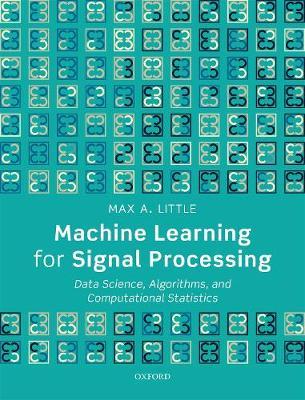Machine Learning for Signal Processing

Machine Learning for Signal Processing
Digital signal processing (DSP) is one of the 'foundational' engineering topics of the modern world, without which technologies such the mobile phone, television, CD and MP3 players, WiFi and radar, would not be possible. A relative newcomer by comparison, statistical machine learning is the theoretical backbone of exciting technologies such as automatic techniques for car registration plate recognition, speech recognition, stock market prediction, defect detection on assembly lines, robot
guidance, and autonomous car navigation. Statistical machine learning exploits the analogy between intelligent information processing in biological brains and sophisticated statistical modelling and inference.
DSP and statistical machine learning are of such wide importance to the knowledge economy that both have undergone rapid changes and seen radical improvements in scope and applicability. Both make use of key topics in applied mathematics such as probability and statistics, algebra, calculus, graphs and networks. Intimate formal links between the two subjects exist and because of this many overlaps exist between the two subjects that can be exploited to produce new DSP tools of surprising
utility, highly suited to the contemporary world of pervasive digital sensors and high-powered, yet cheap, computing hardware. This book gives a solid mathematical foundation to, and details the key concepts and algorithms in this important topic.
PRP: 580.27 Lei
Acesta este Pretul Recomandat de Producator. Pretul de vanzare al produsului este afisat mai jos.
522.24Lei
522.24Lei
580.27 LeiLivrare in 2-4 saptamani
Descrierea produsului
Digital signal processing (DSP) is one of the 'foundational' engineering topics of the modern world, without which technologies such the mobile phone, television, CD and MP3 players, WiFi and radar, would not be possible. A relative newcomer by comparison, statistical machine learning is the theoretical backbone of exciting technologies such as automatic techniques for car registration plate recognition, speech recognition, stock market prediction, defect detection on assembly lines, robot
guidance, and autonomous car navigation. Statistical machine learning exploits the analogy between intelligent information processing in biological brains and sophisticated statistical modelling and inference.
DSP and statistical machine learning are of such wide importance to the knowledge economy that both have undergone rapid changes and seen radical improvements in scope and applicability. Both make use of key topics in applied mathematics such as probability and statistics, algebra, calculus, graphs and networks. Intimate formal links between the two subjects exist and because of this many overlaps exist between the two subjects that can be exploited to produce new DSP tools of surprising
utility, highly suited to the contemporary world of pervasive digital sensors and high-powered, yet cheap, computing hardware. This book gives a solid mathematical foundation to, and details the key concepts and algorithms in this important topic.
Detaliile produsului









